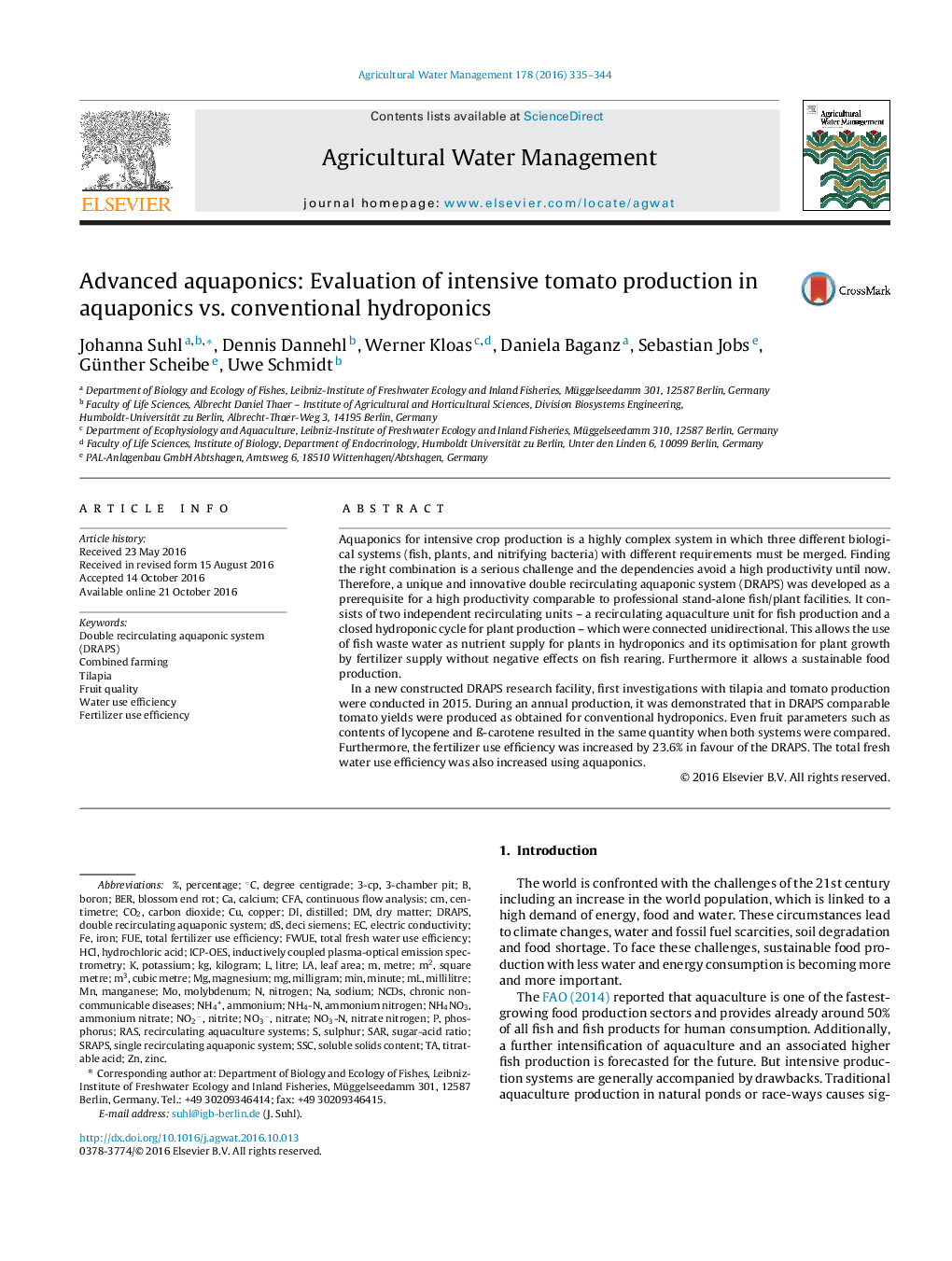| Article ID | Journal | Published Year | Pages | File Type |
|---|---|---|---|---|
| 6363366 | Agricultural Water Management | 2016 | 10 Pages |
â¢High tomato yields in double recirculating aquaponic systems (DRAPS) are possible.â¢Fish waste water does not affect plant production negatively.â¢Continuous nutrient analysis of fish waste water is necessary for high productivity.â¢High amounts of fresh water can be saved by the new aquaponic system.â¢DRAPS can be used for fertilizer savings and therefore for environmental relief.
Aquaponics for intensive crop production is a highly complex system in which three different biological systems (fish, plants, and nitrifying bacteria) with different requirements must be merged. Finding the right combination is a serious challenge and the dependencies avoid a high productivity until now. Therefore, a unique and innovative double recirculating aquaponic system (DRAPS) was developed as a prerequisite for a high productivity comparable to professional stand-alone fish/plant facilities. It consists of two independent recirculating units - a recirculating aquaculture unit for fish production and a closed hydroponic cycle for plant production - which were connected unidirectional. This allows the use of fish waste water as nutrient supply for plants in hydroponics and its optimisation for plant growth by fertilizer supply without negative effects on fish rearing. Furthermore it allows a sustainable food production.In a new constructed DRAPS research facility, first investigations with tilapia and tomato production were conducted in 2015. During an annual production, it was demonstrated that in DRAPS comparable tomato yields were produced as obtained for conventional hydroponics. Even fruit parameters such as contents of lycopene and Ã-carotene resulted in the same quantity when both systems were compared. Furthermore, the fertilizer use efficiency was increased by 23.6% in favour of the DRAPS. The total fresh water use efficiency was also increased using aquaponics.
